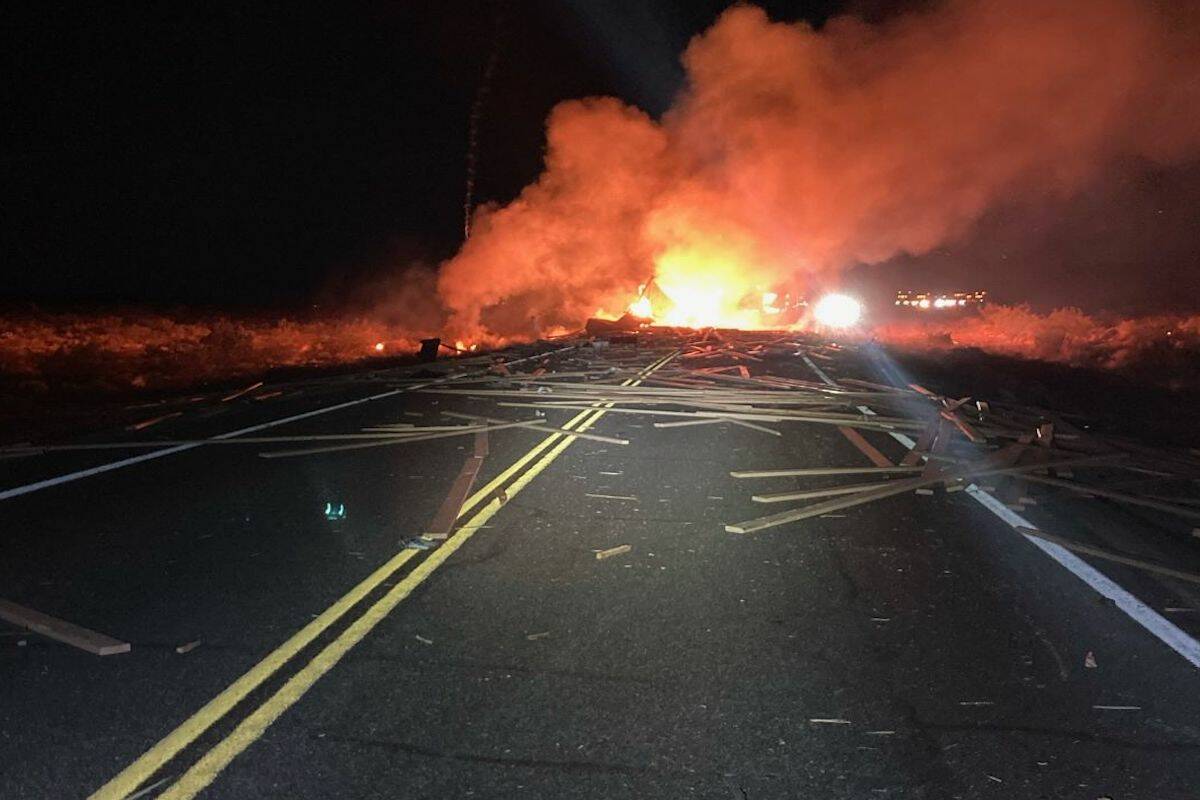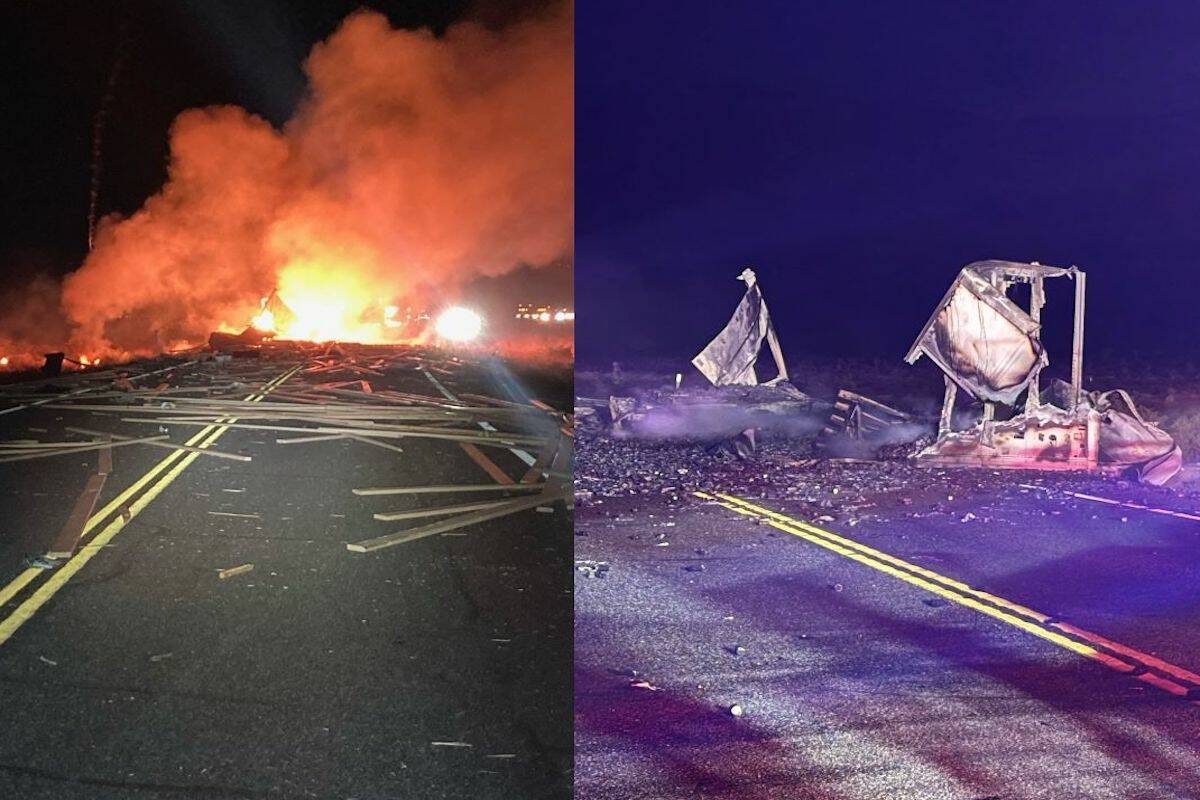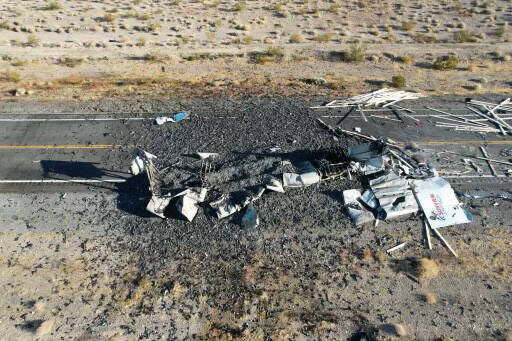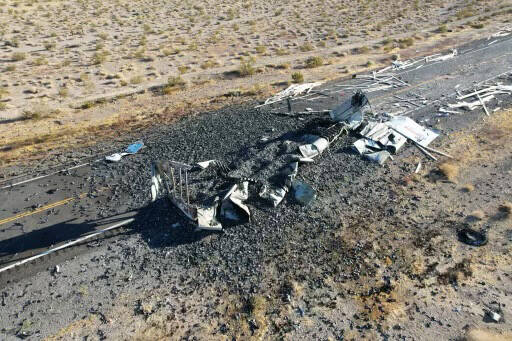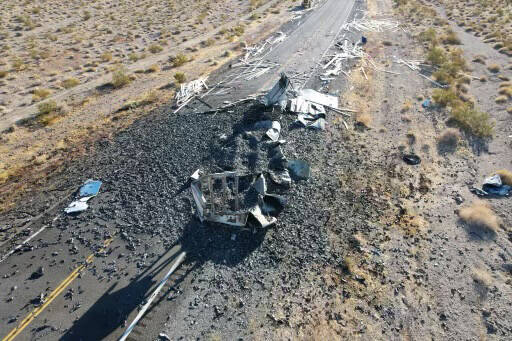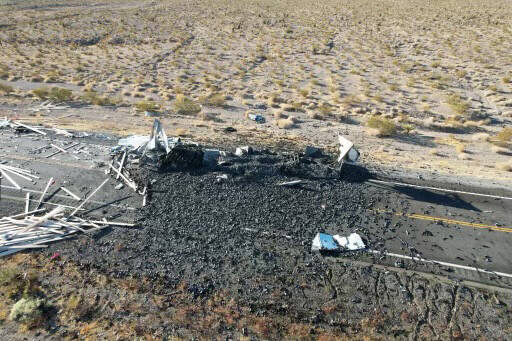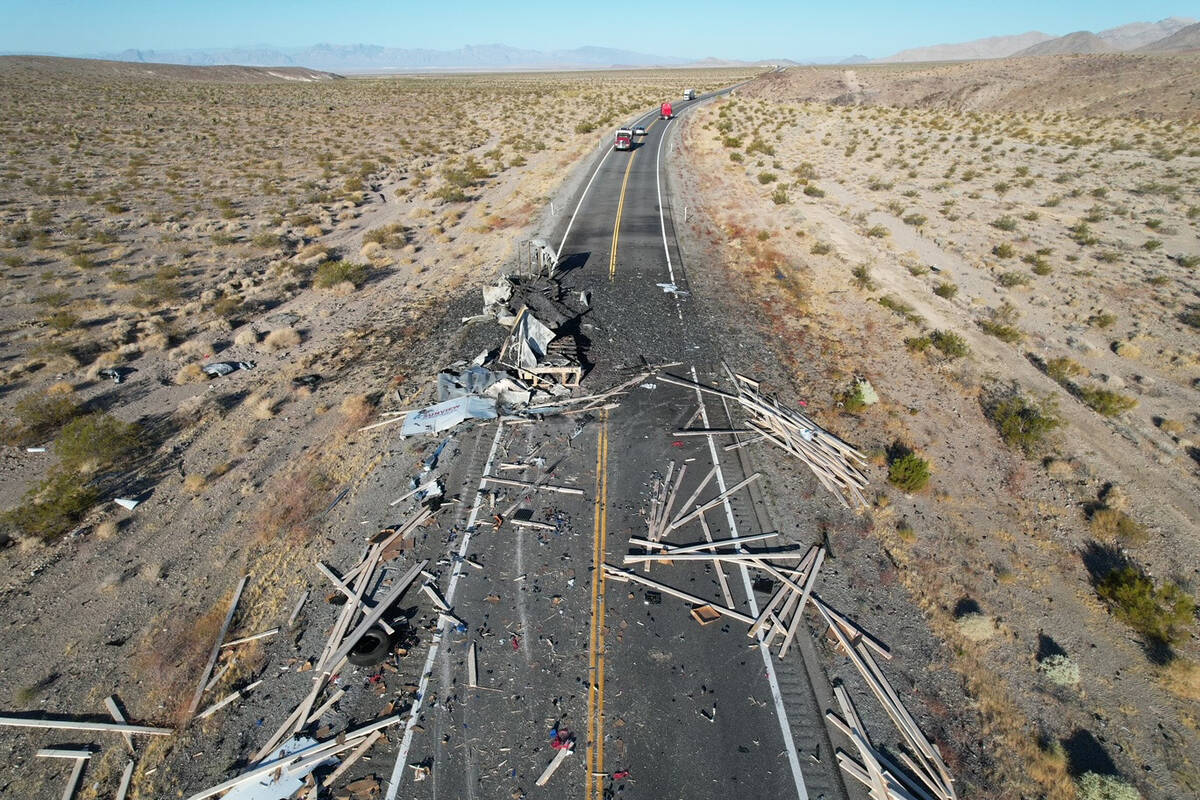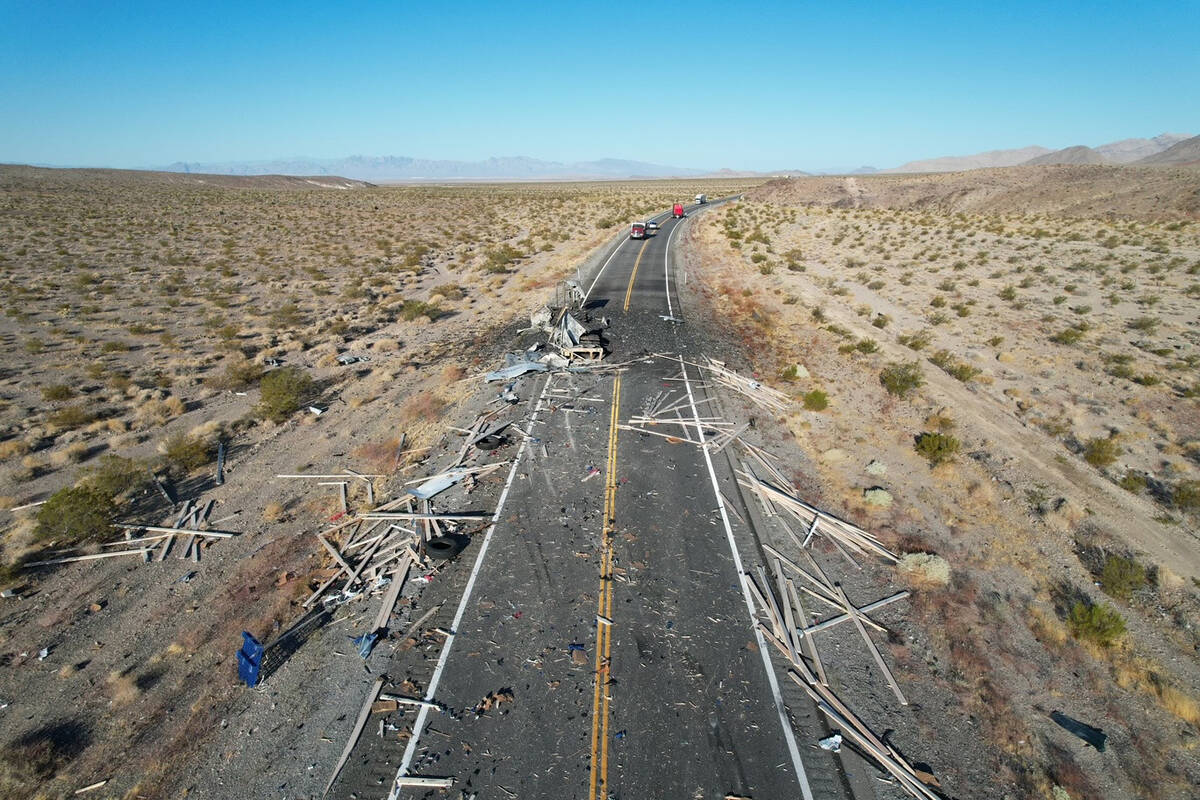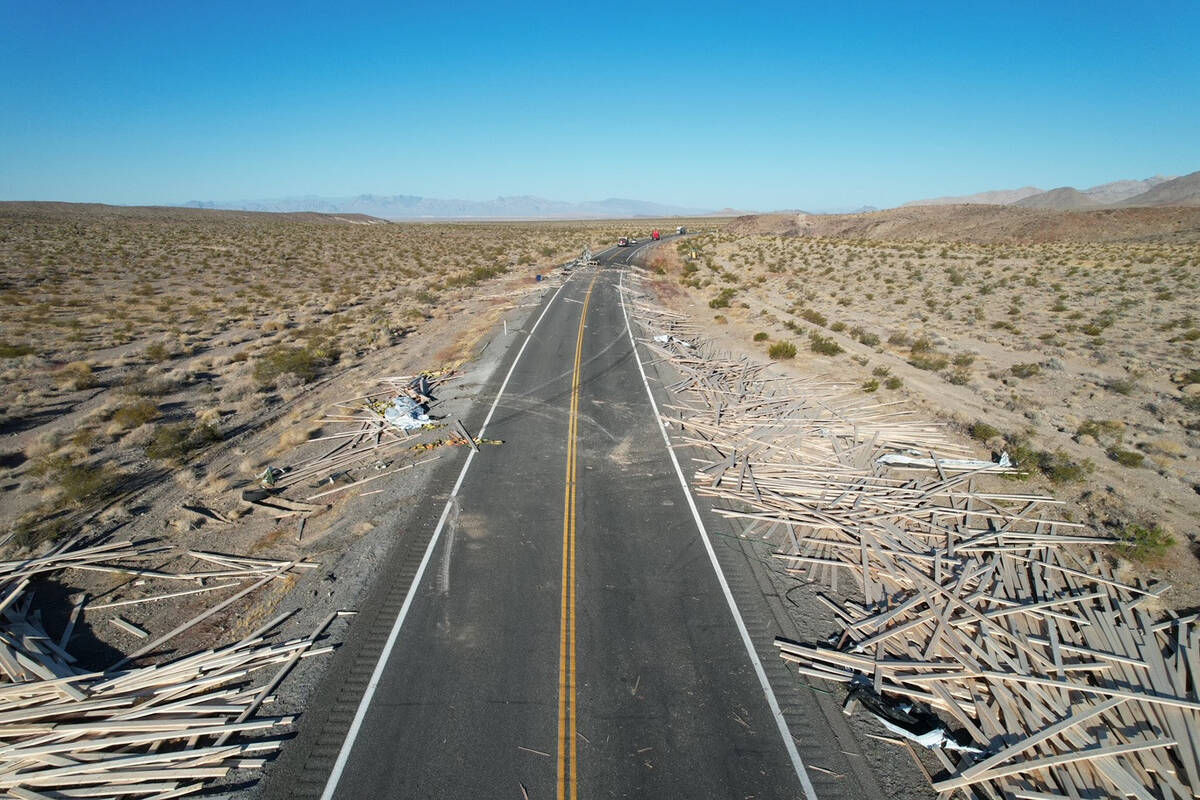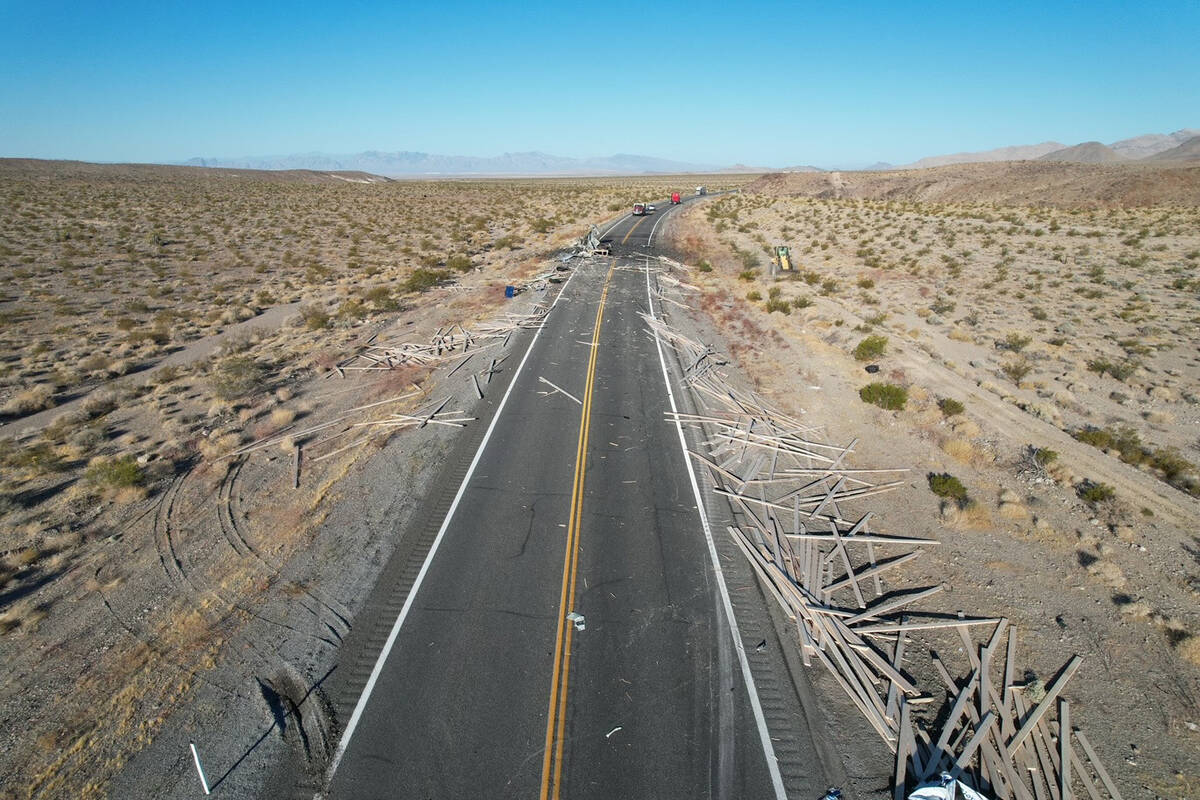Lithium battery truck catches fire near Indian Springs; 3rd such fire in recent months
A fiery crash involving a truck carrying lithium batteries and its aftermath shut down part of U.S. Highway 95 on Tuesday, the latest in a series of incidents involving lithium batteries that have caused fires and chaos for drivers.
Two semi-trucks headed in opposite directions sideswiped just after midnight at Mile Marker 13 in Nye County, between state Route 160 and Mercury, according to the Nevada Highway Patrol. The drivers of both trucks suffered minor injuries, authorities said.
The highway remained closed until Tuesday evening, when the Nevada Department of Transportation announced in a 6:25 p.m. X post that it was again open in both directions.
One truck was carrying wood and the other was hauling 31,000 pounds of lithium batteries, which caught fire almost immediately, according to police and Scott Lewis, the Pahrump fire chief and Nye County director of emergency management.
The Highway Patrol had not determined the cause of the wreck.
Lithium battery fires can present challenges for firefighters and a headache for drivers.
Rep. Dina Titus, D-Nev., recently introduced legislation intended to make transporting the batteries safer. U.S. Transportation Secretary Pete Buttigieg said after a similar crash and fire on Interstate 15 that agencies need more training on how to respond to incidents like this.
“The resulting road closures and the amount of water needed to extinguish these fires have significant impacts on resources in our region,” Titus said in a Tuesday statement, adding that “Congress needs to act quickly” to enact regulations.
The crash and fire
The truck carrying wood was headed south towards Las Vegas and the second truck with lithium batteries was heading north, likely to the Tesla plant in Sparks, Lewis said.
Tesla did not respond to a request for comment Tuesday.
Like other lithium ion fires, the fire involved high temperatures, dangerous gas and explosive forces, according to Lewis.
The fire department brought water with them, he said, and was able to put the fire out around 1:30 or 2 a.m. with about 5,500 gallons of water and a product called F-500.
The Las Vegas Fire Department also sent a hazmat team to assist. Lewis said the team helped with air monitoring.
A hazmat crew had been on scene working to clear the area Tuesday afternoon, police said.
Emerging issue
The crash and subsequent fire leading to the shutdown of U.S. 95 is the third such incident in recent months involving lithium batteries that has impacted travel within or into Nevada.
In late July, a truck carrying six large lithium batteries crashed on Interstate 15 near Barstow, California. While the batteries burned, the freeway was initially shut down for several hours in both directions, with northbound travel shuttered for over 40 hours. The crash shut off the main artery between Southern California and Las Vegas.
That closure created havoc for those driving through Southern California. Traffic backups stretched for miles on I-15 and also on Interstate 40, where many drivers had gone in an attempt to flee the chaos on I-15. Some were stranded in their vehicles.
Caltrans, California’s department of transportation, told the Las Vegas Review-Journal last month that at the time the battery fire was a first of its kind response and the agency responded the best they could, keeping focus on the safety of the traveling public.
Caltrans assisted those in need during the shutdown by providing water, medical aid, gasoline and charges to those with electric vehicles.
Northern California incident
In August, a Tesla electric semi-truck crashed on Interstate 80 in Northern California, while it was en route to the company’s facility in Sparks. The truck struck a steel post and then a tree, causing the vehicle’s battery system to catch fire. The interstate was shut down in both directions for 14 hours, with the eastbound lanes closed for 15 hours.
Fire crews needed 50,000 gallons of water in order to extinguish the blaze, according to an incident report published by the National Transportation Safety Board.
The report noted that the Tesla semi was equipped with Advanced Driver Assistance Systems, but that system was not in operation at the time of the crash, according to the NTSB.
After the I-15 crash in California, U.S. Transportation Secretary Pete Buttigieg told the Review-Journal that agencies need more training to respond to such hazardous conditions.
“Anytime that you have hazardous material moving it’s important for first responders to have the training equipment needed to respond to that,” Buttigieg said. “We have had infrastructure problems, some created by moving gasoline and diesel and not sometimes by newer technologies, as well. As technology evolves, safety practices have to evolve too to stay ahead of that to make sure disruptions are minimized, and above all, to prevent injuries and fatalities.”
The Nevada Department of Transportation and Caltrans met last month to discuss how to better respond to crashes involving lithium batteries.
“We’re looking to enhance how we can operate across jurisdictional boundaries,” NDOT Director Tracy Larkin Thomason said last month during a department board meeting.
Targeted legislation
Titus last week introduced the Thermal Runaway Reduction Act, new legislation which highlights ways to increase the safety of transporting lithium batteries.
The proposal calls for impact testing for lithium-ion batteries, subjecting them to forces seen during crashes, and adding regulations which set the maximum state of charge for lithium-ion batteries that will be transported via ground at 30 percent. That’s similar to a requirement for air transportation of the batteries.
As transportation of lithium batteries increase as their uses expand, Titus hoped the introduced legislation would prevent a crash similar to July’s incident from occurring in a densely populated area.
“Today’s accident and fire on U.S. 95 involving a truck carrying lithium-ion batteries underscores the urgency for Congress to act on the ‘Thermal Runaway Reduction Act’, legislation I introduced last week in response to a similar accident on Interstate 15 in July,” Titus said in a Tuesday statement. “Without better regulation of the transport of these batteries, it is only a matter of time before these accidents and resulting fires take human lives.”
Contact Noble Brigham at nbrigham@reviewjournal.com. Follow @BrighamNoble on X. Contact Mick Akers at makers@reviewjournal.com or 702-387-2920. Follow @mickakers on X.



